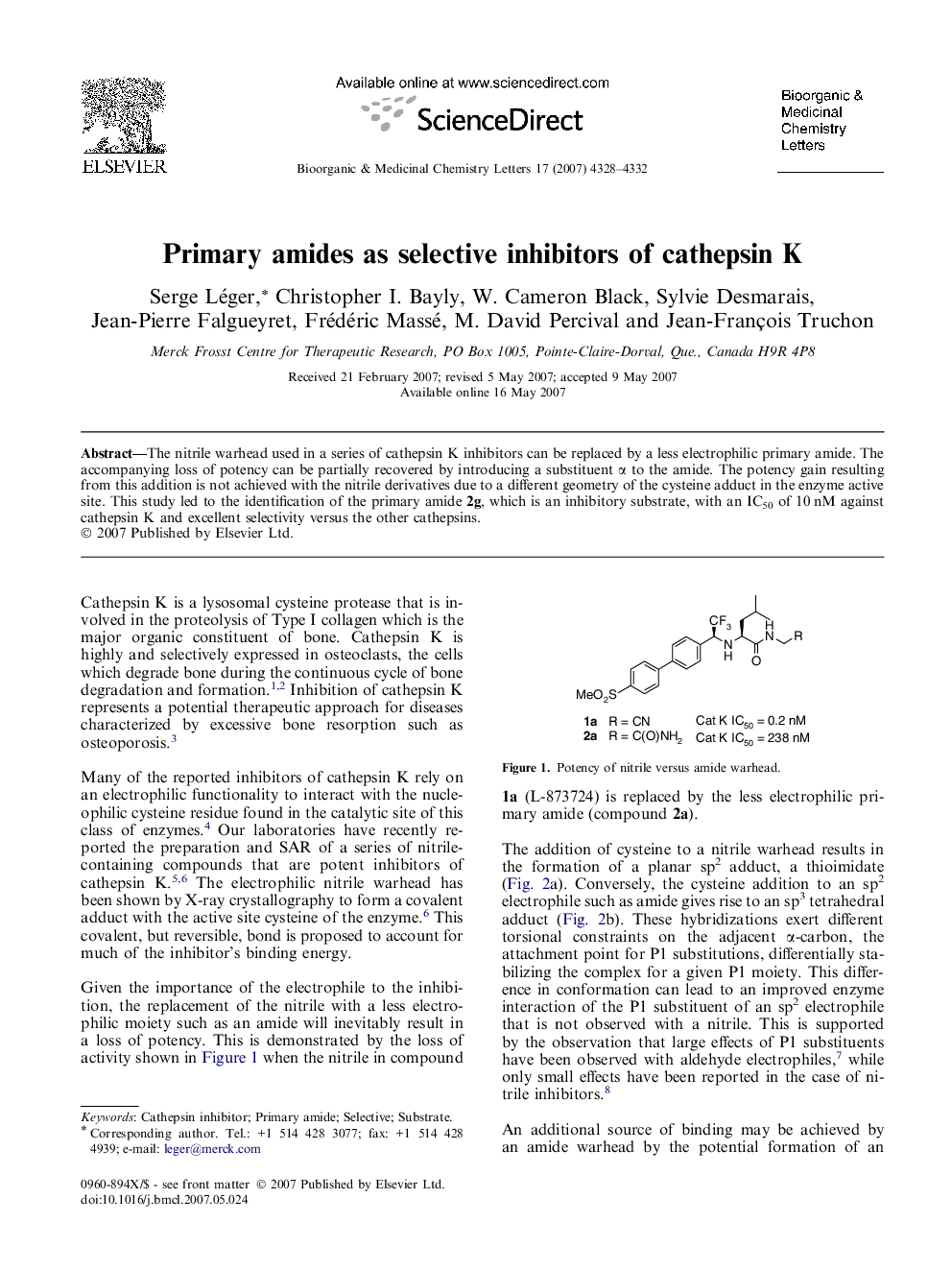| Article ID | Journal | Published Year | Pages | File Type |
|---|---|---|---|---|
| 1366227 | Bioorganic & Medicinal Chemistry Letters | 2007 | 5 Pages |
The nitrile warhead used in a series of cathepsin K inhibitors can be replaced by a less electrophilic primary amide. The accompanying loss of potency can be partially recovered by introducing a substituent α to the amide. The potency gain resulting from this addition is not achieved with the nitrile derivatives due to a different geometry of the cysteine adduct in the enzyme active site. This study led to the identification of the primary amide 2g, which is an inhibitory substrate, with an IC50 of 10 nM against cathepsin K and excellent selectivity versus the other cathepsins.
Graphical abstractMany of the reported inhibitors of cathepsin K rely on an electrophilic functionality to interact with the nucleophilic cysteine residue found in the catalytic site of this class of enzymes. We report a novel series of cathepsin K inhibitors where a nitrile electrophile has been replaced with an α-substituted amide. Introduction of the benzyl substituent resulted in a 24-fold increase in potency over the unsubstituted amides. This series of compounds also showed excellent selectivity against the cathepsins B, L, and S. Mechanistic studies show that these compounds are slowly processed substrates of Cat K.Figure optionsDownload full-size imageDownload as PowerPoint slide
